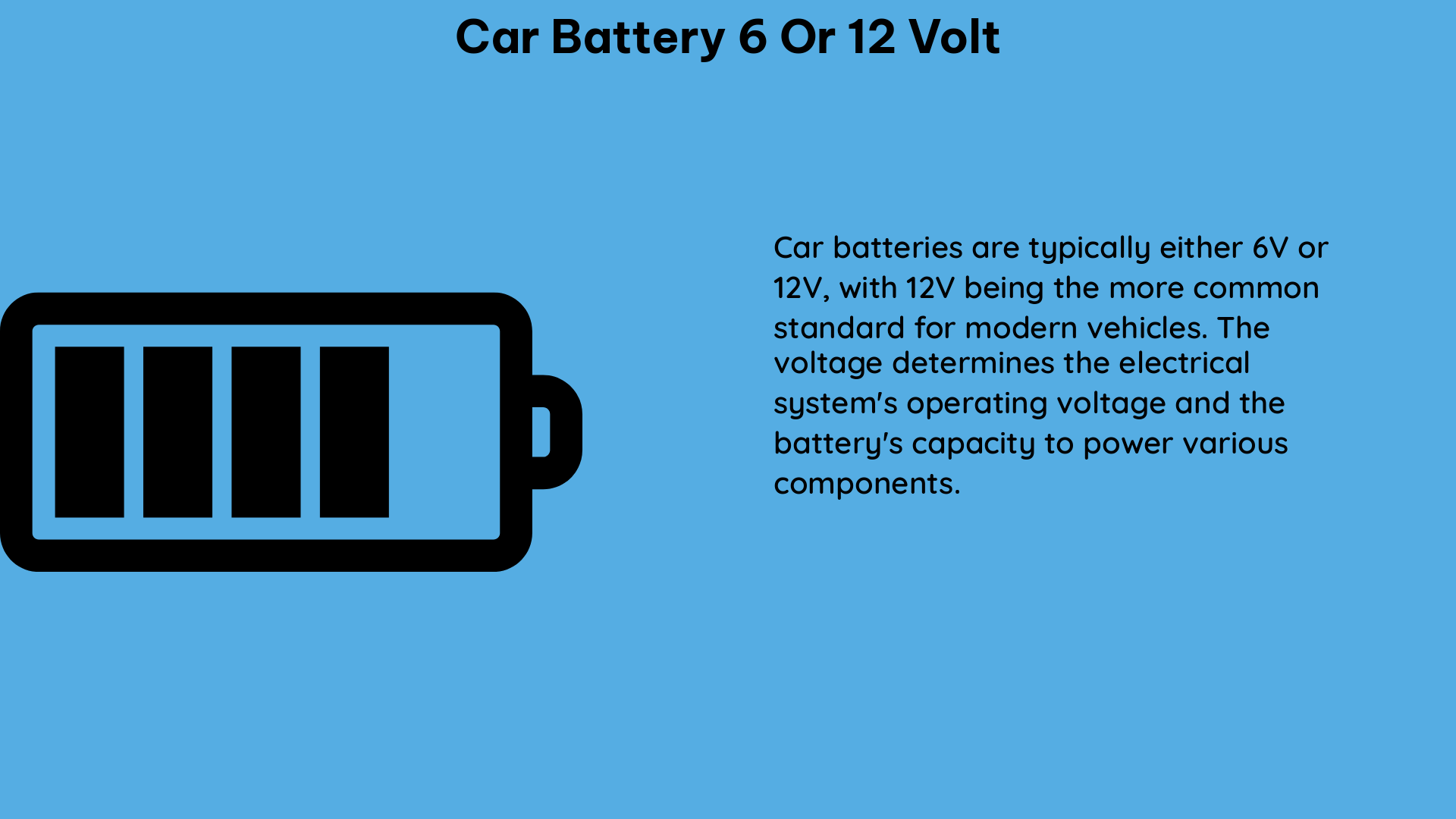When it comes to powering your vehicle, the choice between a 6-volt or 12-volt car battery is a crucial decision. Understanding the technical specifications and performance characteristics of these two battery types can help you make an informed choice and ensure your car starts reliably, even in the harshest of conditions.
Understanding the Voltage Difference
The primary difference between a 6-volt and 12-volt car battery lies in the number of cells they contain. A 6-volt battery has three cells, while a 12-volt battery has six cells. Each cell in a lead-acid battery produces approximately 2.1 volts when fully charged, so a 6-volt battery has a nominal voltage of 6.3 volts (3 cells x 2.1 volts), and a 12-volt battery has a nominal voltage of 12.6 volts (6 cells x 2.1 volts).
Cold Cranking Amps (CCA) Rating

The Cold Cranking Amps (CCA) rating is a crucial specification that measures a battery’s ability to start an engine in cold weather. This rating represents the number of amps a battery can deliver for 30 seconds at 0°F (-18°C) without dropping below 7.2 volts.
- A typical 6-volt car battery may have a CCA rating ranging from 300 to 500 amps.
- A typical 12-volt car battery may have a CCA rating ranging from 500 to 1000 amps.
The higher the CCA rating, the more power the battery can provide to turn over the engine in cold temperatures, making it easier to start your vehicle.
Reserve Capacity (RC) Rating
The Reserve Capacity (RC) rating measures how long a battery can supply a minimum voltage of 10.5 volts while delivering 25 amps of current. This rating is important for powering accessories and electronics in your vehicle when the engine is not running.
- A 6-volt car battery may have an RC rating ranging from 60 to 90 minutes.
- A 12-volt car battery may have an RC rating ranging from 90 to 150 minutes.
A higher RC rating indicates that the battery can supply power for a longer period, making it better suited for vehicles with high-power accessories or extended periods of engine-off operation.
Battery Testing and Maintenance
Proper testing and maintenance are essential for ensuring the longevity and performance of your car battery, regardless of its voltage.
Voltage Testing
- A fully charged 6-volt battery should read between 6.3 and 6.4 volts.
- A fully charged 12-volt battery should read between 12.6 and 12.8 volts.
Specific Gravity Testing
- The specific gravity of each cell in a 6-volt or 12-volt battery should be between 1.265 and 1.295 when the battery is fully charged.
- A hydrometer can be used to measure the specific gravity of the electrolyte in each cell.
Load Testing
- A load test applies a load to the battery and measures its voltage drop to determine its capacity.
- Load testing should only be performed when the battery is at near or full charge.
Choosing the Right Battery
When selecting a replacement car battery, it’s essential to match the voltage, CCA, and RC ratings to your vehicle’s specifications. Consult your owner’s manual or a qualified automotive technician to ensure you choose the correct battery for your car.
Conclusion
In the world of car batteries, the choice between 6-volt and 12-volt models can have a significant impact on your vehicle’s performance and reliability. By understanding the technical specifications and testing procedures, you can make an informed decision and ensure your car starts and runs smoothly, even in the most challenging conditions.
References:
- Mechanics.stackexchange.com, “Brand new lead acid car battery reads only 12.33v. Is it faulty?”, https://mechanics.stackexchange.com/questions/77252/brand-new-lead-acid-car-battery-reads-only-12-33v-is-it-faulty
- Batterystuff.com, “Battery Basics – Guide to Batteries | BatteryStuff”, https://www.batterystuff.com/kb/articles/battery-articles/battery-basics.html
- 4x4earth.com, “Battery State of Charge data poll.”, https://www.4x4earth.com/forum/index.php?threads/battery-state-of-charge-data-poll.13711/

The lambdageeks.com Core SME Team is a group of experienced subject matter experts from diverse scientific and technical fields including Physics, Chemistry, Technology,Electronics & Electrical Engineering, Automotive, Mechanical Engineering. Our team collaborates to create high-quality, well-researched articles on a wide range of science and technology topics for the lambdageeks.com website.
All Our Senior SME are having more than 7 Years of experience in the respective fields . They are either Working Industry Professionals or assocaited With different Universities. Refer Our Authors Page to get to know About our Core SMEs.